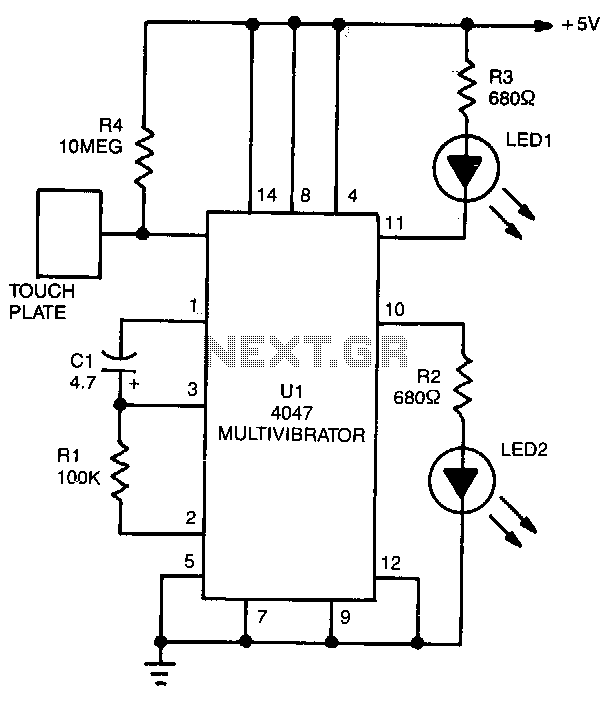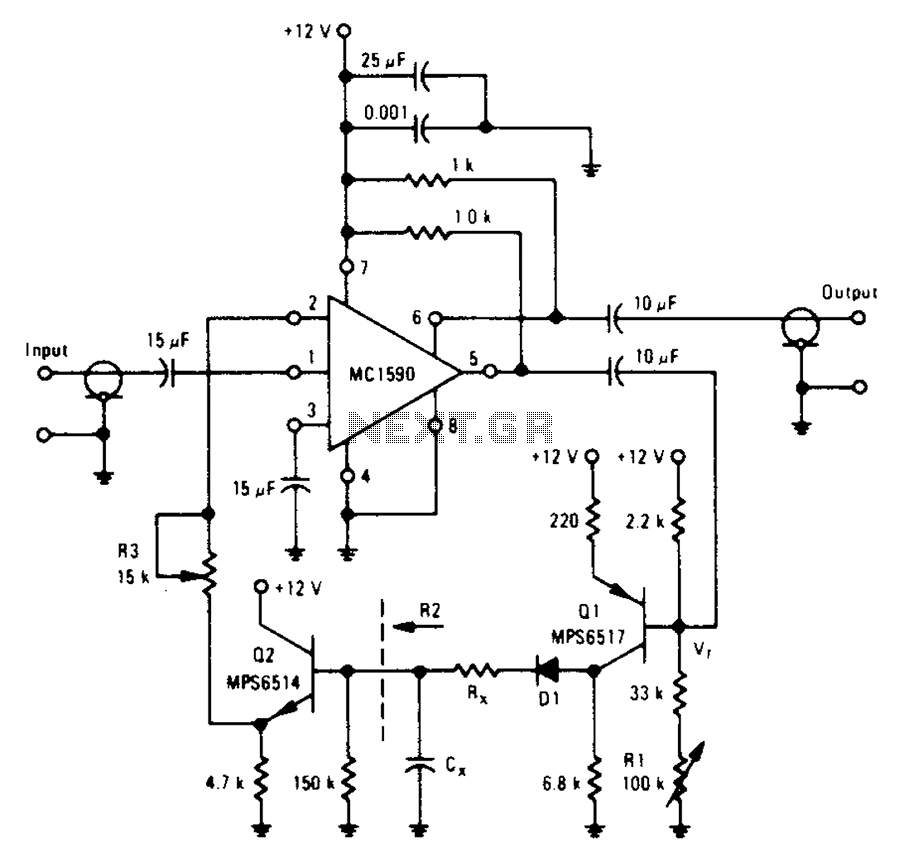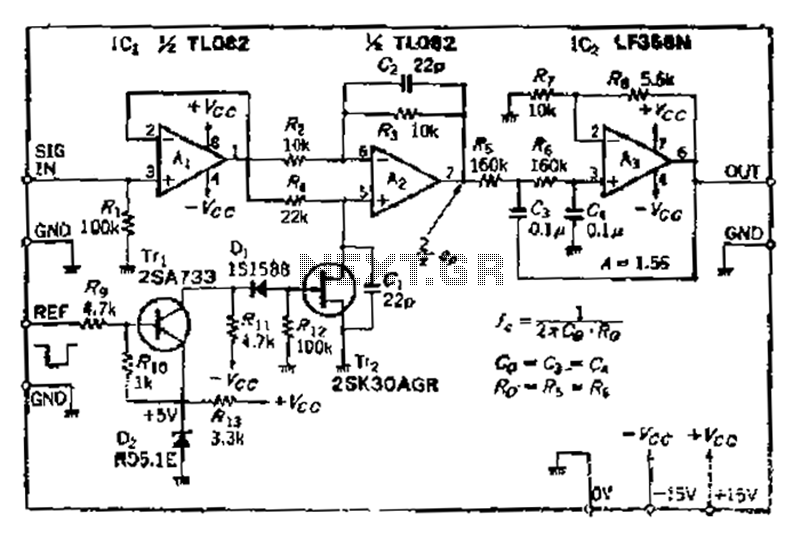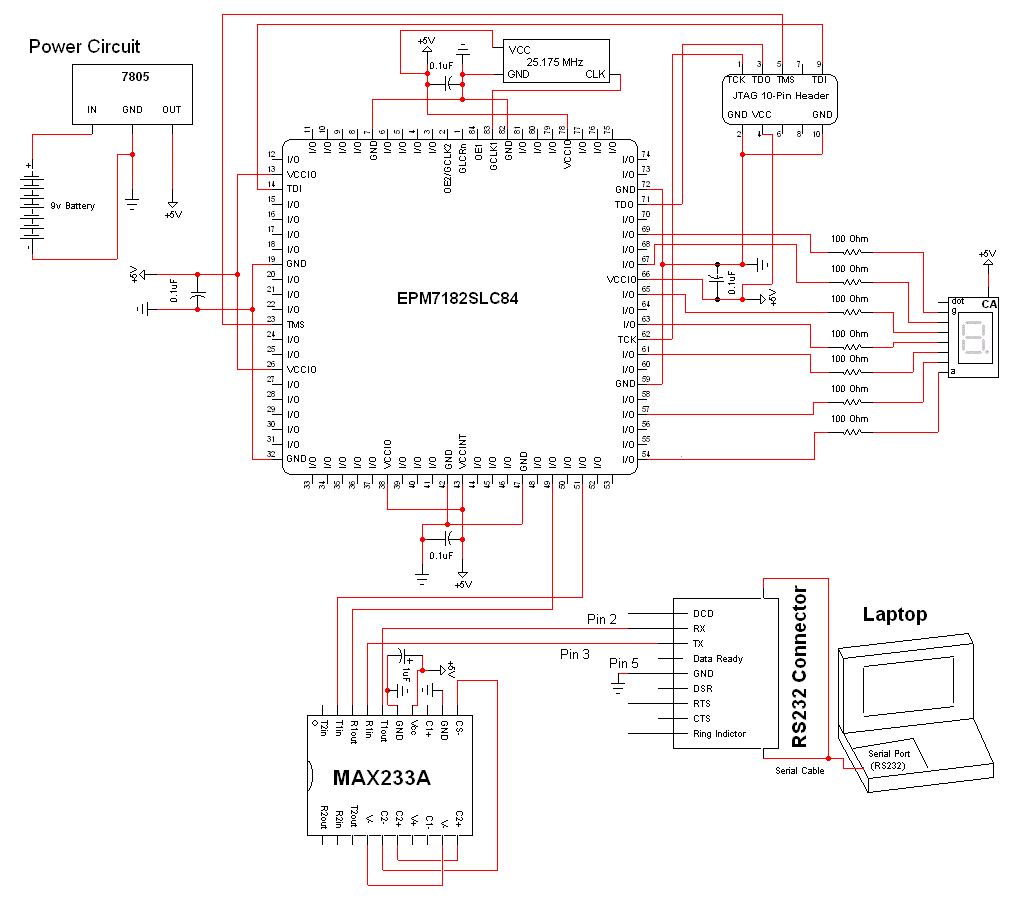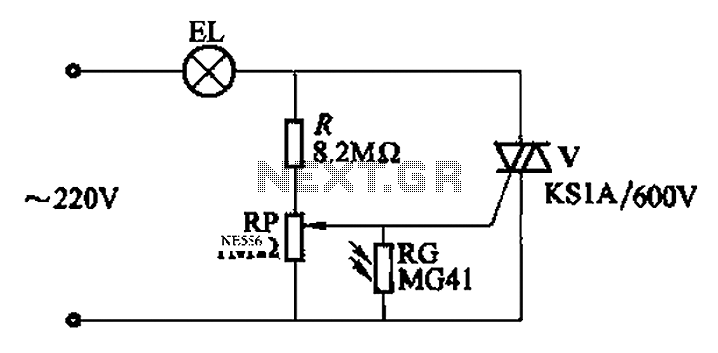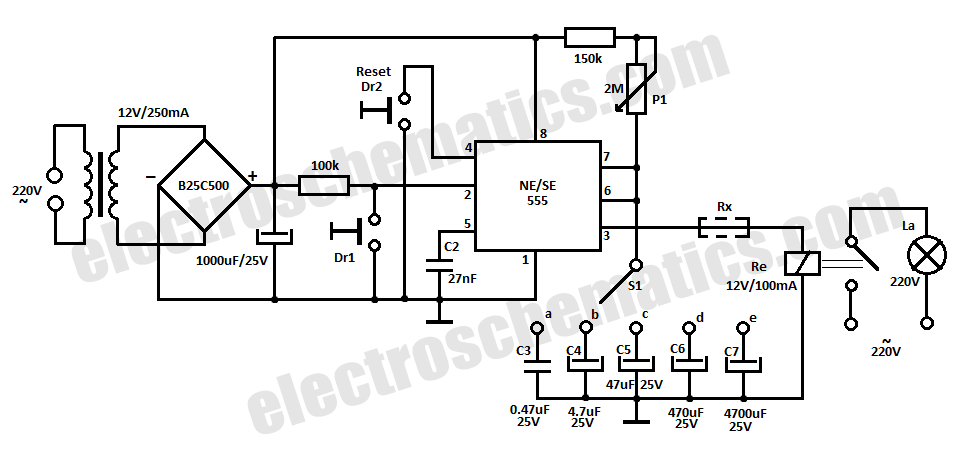
Thyristor controlled forward start circuit
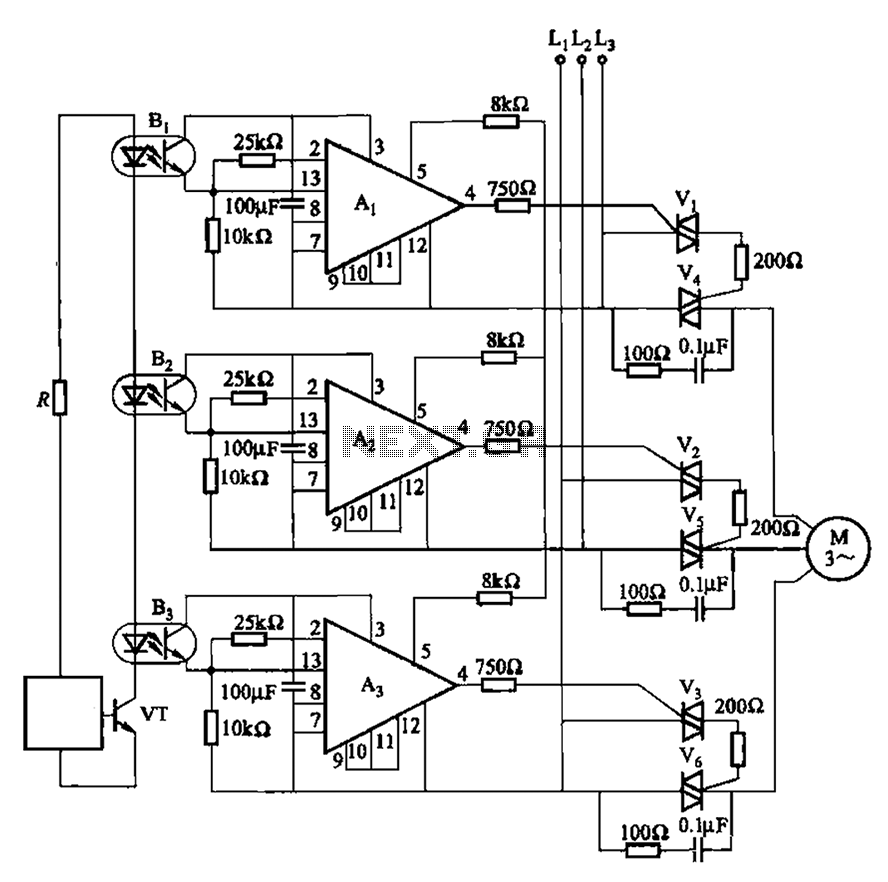
The 331 circuit depicted in the figure utilizes a two-way thyristor for controlling the start and stop functions of a motor. It operates without mechanical contacts, generating no noise or sparks, making it suitable for applications that require frequent operation.
The 331 circuit employs a two-way thyristor, also known as a bidirectional thyristor, which facilitates the control of motor operations through an electronic switching mechanism. This configuration eliminates the need for traditional mechanical contacts, resulting in a significant reduction in wear and tear, thereby enhancing the reliability and longevity of the system.
The circuit is designed to manage the motor's start and stop functions efficiently, utilizing the thyristor's ability to handle high currents and voltages with minimal losses. The absence of contact points not only reduces noise and electrical arcing—common issues in conventional relay-based systems—but also contributes to a cleaner operational environment. This feature is particularly advantageous in applications where noise reduction is critical, such as in residential or sensitive industrial settings.
The thyristor is triggered by a control signal, which can be generated by various means, such as a microcontroller or a simple switch. Upon receiving the trigger signal, the thyristor allows current to flow through the motor, initiating its operation. To stop the motor, the control signal is removed, and the thyristor enters a blocking state, effectively halting the current flow. This process can be repeated as needed, making the circuit ideal for applications requiring frequent start-stop cycles.
In summary, the 331 circuit's design prioritizes efficiency, reliability, and noise reduction, making it well-suited for environments where motors must be operated frequently without the disadvantages associated with traditional electromechanical systems.331 circuit shown in FIG. It uses two-way thyristor controlled motor start and stop. It has no contact, no noise sound, no spark, etc., suitable for frequent operation of the o ccasion.
The 331 circuit employs a two-way thyristor, also known as a bidirectional thyristor, which facilitates the control of motor operations through an electronic switching mechanism. This configuration eliminates the need for traditional mechanical contacts, resulting in a significant reduction in wear and tear, thereby enhancing the reliability and longevity of the system.
The circuit is designed to manage the motor's start and stop functions efficiently, utilizing the thyristor's ability to handle high currents and voltages with minimal losses. The absence of contact points not only reduces noise and electrical arcing—common issues in conventional relay-based systems—but also contributes to a cleaner operational environment. This feature is particularly advantageous in applications where noise reduction is critical, such as in residential or sensitive industrial settings.
The thyristor is triggered by a control signal, which can be generated by various means, such as a microcontroller or a simple switch. Upon receiving the trigger signal, the thyristor allows current to flow through the motor, initiating its operation. To stop the motor, the control signal is removed, and the thyristor enters a blocking state, effectively halting the current flow. This process can be repeated as needed, making the circuit ideal for applications requiring frequent start-stop cycles.
In summary, the 331 circuit's design prioritizes efficiency, reliability, and noise reduction, making it well-suited for environments where motors must be operated frequently without the disadvantages associated with traditional electromechanical systems.331 circuit shown in FIG. It uses two-way thyristor controlled motor start and stop. It has no contact, no noise sound, no spark, etc., suitable for frequent operation of the o ccasion.
Warning: include(partials/cookie-banner.php): Failed to open stream: Permission denied in /var/www/html/nextgr/view-circuit.php on line 713
Warning: include(): Failed opening 'partials/cookie-banner.php' for inclusion (include_path='.:/usr/share/php') in /var/www/html/nextgr/view-circuit.php on line 713
